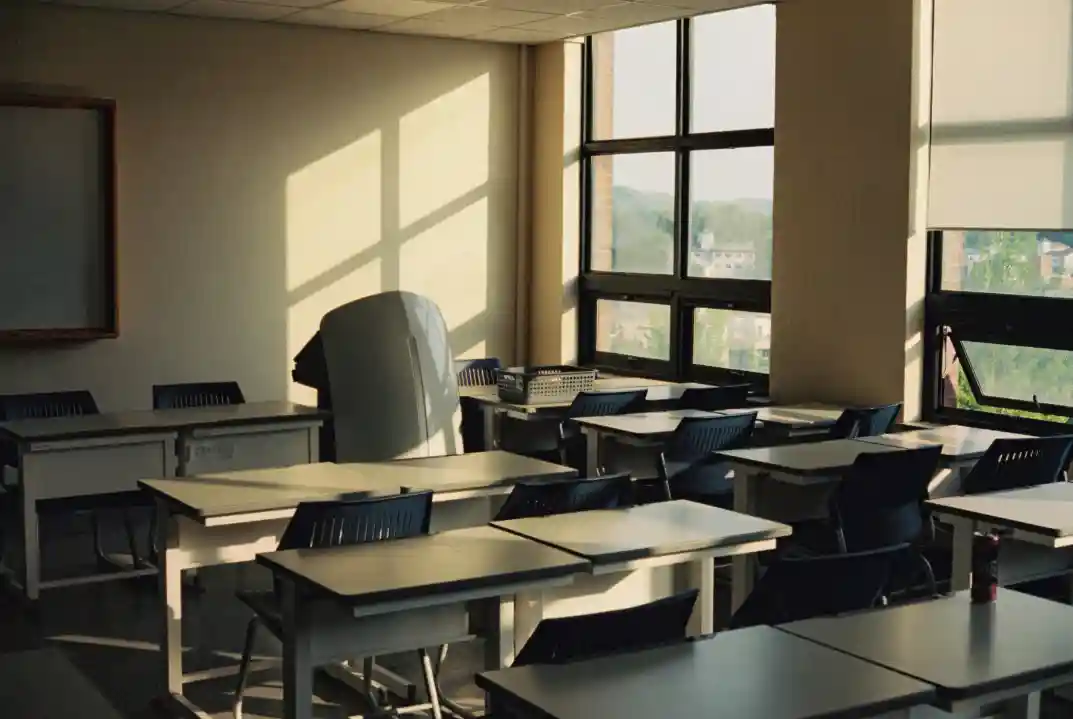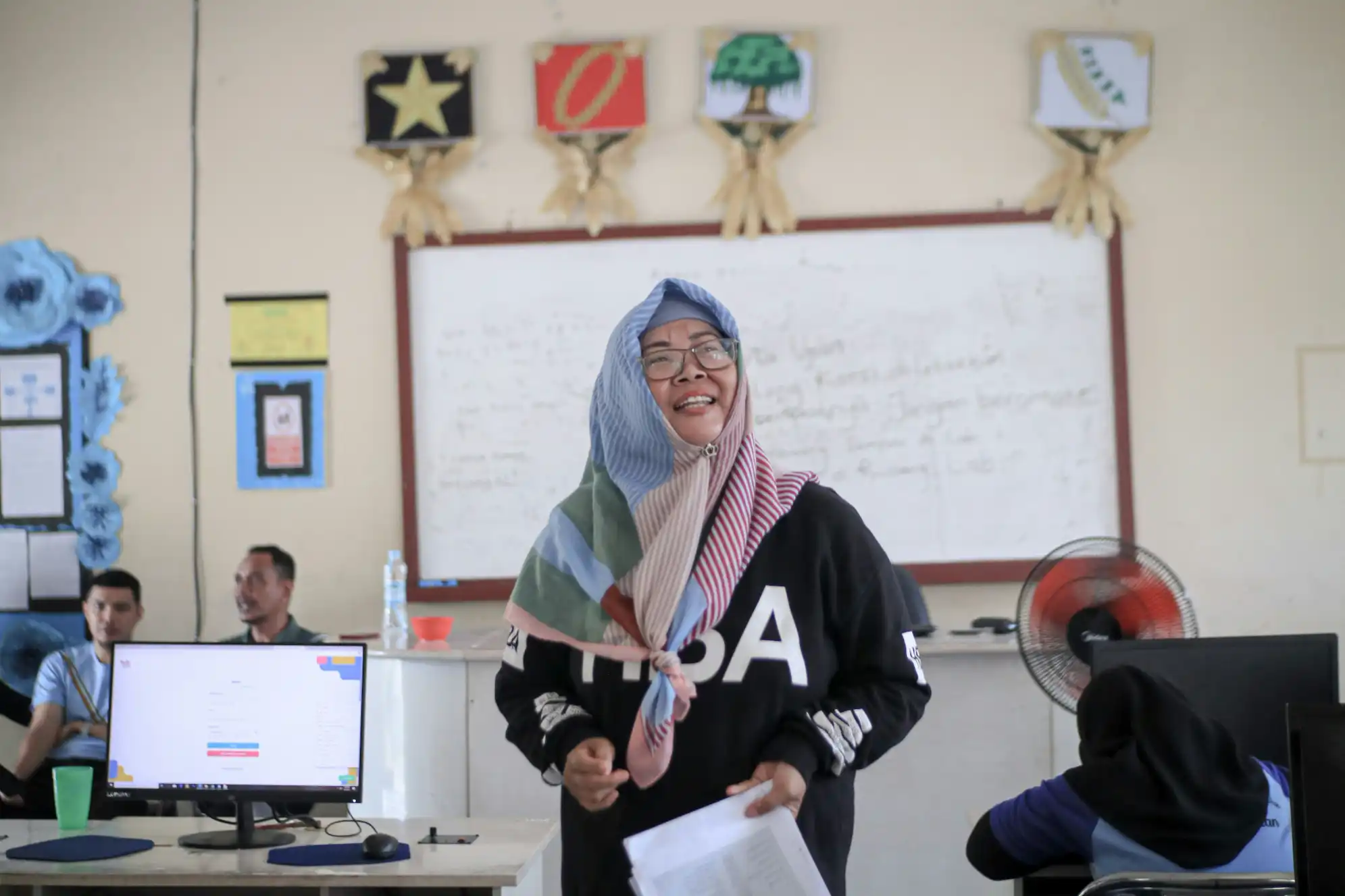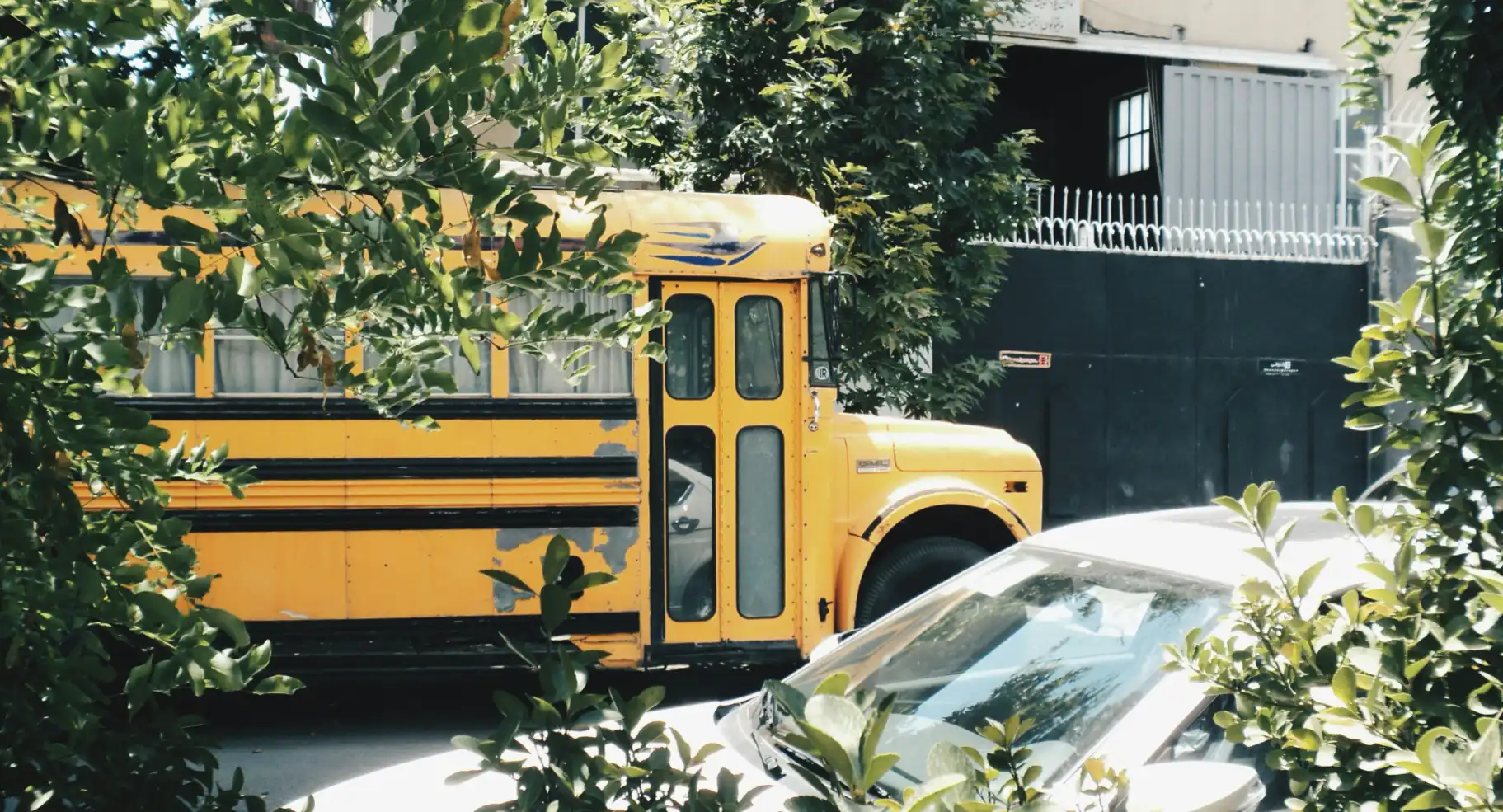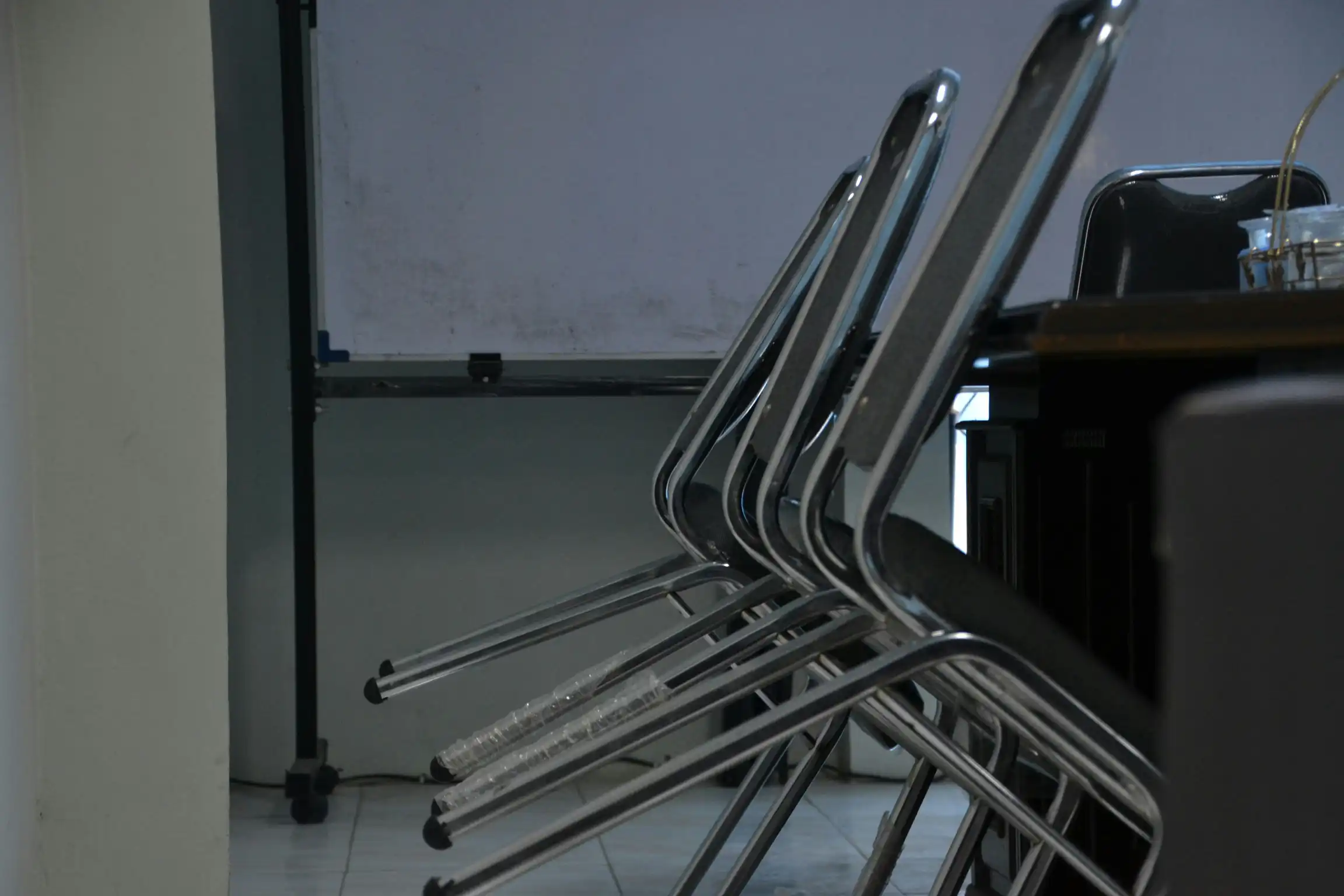For Education Leaders
Get proven strategies and expert analysis from the host of the Learning Can't Wait podcast, delivered straight to your inbox.
Chronic Absenteeism: Definition, Causes, Impact & Solutions

Chronic absenteeism, which refers to a student missing at least 10% of school days in the course of an academic year, has turned into a major problem within the US educational system since the pandemic. While rates seem to be slowing down after a peak in 2020-2021, they remain significantly above the pre-pandemic levels. Because of the numerous risks that this issue brings to students, schools, and communities, states, districts, and institutions need to put the necessary effort into reducing occurrences and bringing children back to the classroom.
If your district struggles with filling teacher vacancies, check out Fullmind virtual staffing services. We offer highly qualified, state-certified K-12 teachers that are trained in integrated instruction. Matchings take up to two weeks, and services are available nationwide.
What Chronic Absenteeism Is: Definition
Chronic absenteeism is defined as missing 10% or more of school days during an academic year for whatever reason. The definition includes excused absences, unexcused absences, and suspensions. This amounts to about 18-20 missed days per school year or an average of two days per month for a student to be considered chronically absent.
Chronic absenteeism is a major challenge within the US educational system as it is one of the main causes of poor academic achievement. In addition, students who are chronically absent are more likely to drop out from school and not do well in life.
Chronic Absenteeism vs Truancy
The term chronic absenteeism is related to another concept in the educational system - truancy. While both refer to a student being absent from school, there are crucially important distinctions between the two concepts.
Chronic absenteeism covers all types of absences, including excused absences, unexcused absences, and suspensions. A child needs to be absent from the classroom for 10% or more of school days to be considered chronically absent. The focus in this case is on the academic consequences as the child loses instruction and assignments.
Meanwhile, truancy refers strictly to unexcused absences, which are intentional, unjustified, unauthorized, and against school policies. Different states have various requirements in terms of the frequency and the amount of unexcused absences to classify them as truancy. In some states, three or more unexcused absences per academic year count as truancy, while in others students need to be absent for 10% or 20% of the school year days to be considered truant. In any case, when it comes to truancy, the focus is on compliance with school rules, rather than on academic outcomes, as this becomes a disciplinary issue.
Why Chronic Absenteeism Happens: Common Causes
There are many reasons why children skip school consistently, and the most predominant causes of chronic absenteeism include:
- Academic challenges: Students who struggle with educational content, classroom assignments, and assessments tend to skip school to avoid having to deal with these challenges. However, this is a vicious cycle that is hard to escape as the more a child is absent from school, the more difficult it gets to catch up, which leads to further deterioration in academic performance, which in turn causes more absences.
- Student disengagement: Lack of student engagement inside and outside the classroom is another leading cause of more frequent absences from school. Student disengagement can result from many reasons, including not finding educational content interesting and engaging, not being able to connect education with real life, problematic relationships with peers, lack of support from parents, and others. In all cases, students who don’t feel engaged are at a higher risk of becoming victims of chronic absenteeism.
- Health issues: Health-related issues lead to regular absences, whether they affect the student directly (the student has a chronic disease or a disability themselves) or a family member (when a close relative is chronically sick and the child needs to take care of them or this prevents them from attending school in another way). Students with disabilities, such as children with IEPs and 504 plans, are disproportionately affected by chronic absenteeism because of frequent doctor appointments or medical procedures, mobility issues, emotional stress, and others.
- Mental health: Poor mental health is another common cause of chronic absenteeism that needs to be treated separately from health problems. According to data from the U.S. Center for Disease Control and Prevention (CDC), 13% of children aged 3-17 years have a current, diagnosed mental or behavioral health condition, with the most prevalent conditions among students being anxiety, depression, and behavior disorders. All these conditions and other mental health issues make children skip school more frequently.
- Bullying and unsafe school conditions: Being bullied or feeling unsafe at school for other reasons is another underlying cause of common absences as students want to avoid the toxic environment. Bullying is a significant problem in the educational system as, based on data from the National Center for Education Statistics (NCES), 19% - or almost one fifth - of students aged 12-18 years report being bullied at school, including both physical and psychological actions and threats. Being subjected to bullying is particularly common among females, students with two or more races, in rural areas, and at public schools. As a result, thousands of students take unexcused absences nationwide to avoid bullying on a daily basis.
- Family circumstances and housing instability: Various issues at home increase the incidents of chronic absenteeism. Common reasons that prevent children from being able to attend school include having to take care of a younger sibling or an ill family member, having to provide financially for the family, parents divorce, food instability, and frequent moves, among others.
- Lack of necessary support: Children who lack support from their parents, family, community, and society are more likely to skip school. Poverty and lack of transportation are particularly common reasons for that.
- Systemic barriers: Built-in challenges in the educational system also contribute to this problem. Inequities in education, such as racial discrimination or language barriers, and inflexible school policies, like overly harsh disciplinary actions, tend to push children out of the classroom.
- Socio-economic factors: There is a wide range of social and economic challenges that might keep students out of school on a regular basis. These include but are not limited to lack of school supplies, lack of school clothes or uniforms, transportation issues, housing instability, and others.
- Substance abuse and delinquency: Yet another group of students who suffer from chronic absenteeism more often than others is those who abuse substances and delinquents.
With so many factors that can lead to chronic absenteeism, alleviation policies and solutions need to be equally diverse to address the root causes of the problem and allow students to attend school on a regular basis.
Whom Chronic Absenteeism Affects the Most: Statistics
Chronic absenteeism trends in recent years have been worrisome, to say the least. There is not only a massive general increase in the overall rate, but there are also major disparities among students based on location, race, ethnicity, native language, and disabilities.
According to data from the U.S. Department of Education, in the school year 2021-2022, the national rate of chronic absenteeism reached an all-time high of 31%. This means that almost one third of US K-12 students missed at least 10% of school days, for various reasons. This rate is nearly double the prevalent pre-pandemic level of about 16%. There was a drop to 28% in the academic year 2022-2023, but this remains a major challenge in the US educational system, adversely affecting a large proportion of students both academically and otherwise.
It’s important to note that while chronic absenteeism is a problem nationwide, from coast to coast, it impacts certain groups and types of students disproportionately more than others.
At the state level, in 2022-2023, 20 states reported rates exceeding 30%.
The 10 US states and territories with the highest rates of chronic absenteeism in 2022-2023 included:
- District of Columbia: 47%
- Oregon: 44%
- Alaska: 43%
- New Mexico: 43%
- Puerto Rico: 42%
- Arizona: 41%
- Nevada: 39%
- Montana: 36%
- Washington: 35%
- New York: 35%
Meanwhile, the 13 US states with the lowest chronic absenteeism rates in 2022-2023 comprised:
- New Jersey: 17%
- Idaho: 17%
- Virginia: 19%
- Missouri: 21%
- Louisiana: 21%
- North Dakota: 21%
- South Dakota: 23%
- Nebraska: 23%
- Texas: 23%
- Arkansas: 23%
- Alabama: 23%
- Pennsylvania: 23%
- Massachusetts: 23%
While these numbers are already striking enough, they don’t even tell the full picture. There are numerous US cities and school districts where more than half the student population misses more than 10% of school days. In 2021-2022, the rate reached 77% in Detroit Public Schools Community District. Similarly, the rate is about 60% in Buffalo and Rochester in New York State and as high as 58% in Baltimore, MD.
In addition to geographical disparities, race and ethnicity also play a crucial role in this phenomenon. The highest rates of chronic absenteeism affect American Indian (46.1%), Pacific Islander (45.1%), and Black (37.0%) students. At the same time, the prevalence is only 14.8% among Asian students and 21.9% among White students (2022-2023 data).
Furthermore, 31.6% of English learners suffer from chronic absenteeism, compared to 27.2% of non-English learners.
Yet another group of students that are disproportionately impacted by this problem is children with disabilities. As many as 36.0% of students with disabilities (whether qualifying for an IEP or not) were chronically absent in the academic year 2022-2023, while the rate was 26.4% among students without disabilities.
These figures highlight that chronic absenteeism is not only a major challenge facing states, districts, and schools across the country, but also yet another reflection of deeply rooted inequalities among student populations on the basis of location, race, language, and disability status.
Why Chronic Absenteeism Matters: Impact on Students, Schools, and Communities
In addition to being a manifestation of a multitude of serious problems in the educational system, chronic absenteeism has a deep impact on students as well as schools and entire communities. School attendance matters and is crucially important for the academic and socio-emotional success of students, both at school and post-graduation. Meanwhile, missing school on a regular basis leads to a series of further problems and challenges for students.
The most significant ways in which this widespread phenomenon affects students include:
- Poor academic performance: First and foremost, chronic absenteeism is directly associated with worse academic skills and results. Young children who do not attend school regularly experience delays in reading capabilities and other skills.
- Further student disengagement: While disengagement is one of the leading causes of chronic absenteeism, not attending school leads to further sense of detachment and lack of belonging. This, in turn, results in additional problems, such as bad behavior, poor discipline, problematic relationships with fellow students, and others.
- Weaker relationships with peers and educators: When students don’t go to school, they miss the important opportunity to forge meaningful friendships with other students and fruitful relationships with teachers and other school staff. This deprives children of a major support network as well as preventing the development of lifelong skills.
- Lack of social and emotional skills: This phenomenon also negatively affects the social and emotional development of children. It obstructs the building of relationships and the learning of crucial skills along the way.
- Restricted access to services: When students with disabilities do not attend school in a consistent manner, their disability and its impact on the education process might remain unnoticed as their academic performance and behavior might be attributed to the absenteeism rather than a potential disability. As children remain undiagnosed and unevaluated, they lose access to Individualized Education Programs (IEPs) or 504 plans including special education instruction, accommodations, and related services that might help them perform better academically, behavior-wise, and socio-emotionally.
- Higher dropout rates: Chronic absenteeism not only leads to worse academic results but also causes children to leave school before graduation. This deprives them of the right to finish high-school education in addition to many opportunities after school.
- Lower graduation rates: Related to a higher risk of dropping out of school, students who don’t attend school regularly are more likely to not graduate.
- Missed future opportunities: Due to lower grades, fewer academic and non-academic skills, and lower graduation rates, students who suffer from chronic absenteeism face limited long-term perspectives, such as post-graduate education and a successful career.
- Less successful life outcomes: Finally, for all the reasons listed above, students who miss more days at school generally face less prosperous careers.
Moreover, chronic absenteeism has the following impact on schools:
- Lower scores on standardized tests: Schools with high percentages of chronically absent students tend to perform worse on federal, state, and district assessments, which undermines their reputation and makes them less attractive for students and staff.
- Restricted access to funding: In many states, funding is allocated to public schools according to an attendance-based model. This means that institutions with higher absenteeism rates receive less funds, which makes it harder to deliver high-quality education.
- Need to fund additional programs: In addition to having access to less funding, schools with above-average rates of chronic absenteeism need to allocate their already limited financial resources to special programs to fight this problem. This puts further pressure on their administration.
- Higher teacher turnover: Teacher burnout occurs more frequently when instructors have to put additional effort into boosting student engagement. In turn, staff is more likely to quit, while recruiting new teachers becomes more challenging due to the poor reputation of the institution, leading to higher rates of teacher shortages and lower quality of education.
The negative effects of chronic absenteeism at school transpire to the community level as a whole, too. In specific, communities in districts where this problem is more prevalent feel the following impacts:
- Less qualified workforce: As chronically absent students are more likely to drop out of school and not go for post-secondary education, societies end up with less skilled workers in the pipeline.
- Higher rates of poverty: As youth are not qualified for high-paying jobs or often are not able to find any job at all, they face poverty more frequently.
- More reliance on social programs: Because of increased unemployment and poverty, areas with high rates of chronic absenteeism rely more heavily on federal and state social programs.
- Public safety risks: There is evidence that chronic absenteeism is related to higher rates of juvenile delinquency.
- Exacerbated cycle of disadvantage: While chronically absent students typically come from disadvantaged families in underserved areas, communities find it harder to break from the cycle of disadvantage, reinforcing the challenges they are struggling with. Chronic absenteeism turns into a self-fulfilling prophecy for generations to come.
Because of the large negative effects that chronic absenteeism has at all levels, both individual and communal, states and districts need to put the necessary effort into addressing this issue and keeping students in the classroom for the benefit of all parties involved.
How Chronic Absenteeism Can Be Addressed: 10 Strategies
As there are many different reasons why students might miss school regularly and consistently, the strategies and policies that states, districts, and schools apply to counteract this challenge also need to be diverse and flexible. The best tactics for addressing this issue within the educational system aim at dealing with the root causes of the problem as this is the most strategic and sustainable manner to fix the issue in the long term.
The 10 most effective strategies to reduce chronic absenteeism and improve attendance are:
- Follow up with students with a few absences: Make sure that you address potential absenteeism before it becomes chronic and difficult to tackle. Monitor student attendance purposefully and follow up with children who miss school a couple of times to discuss the reason and what the school can do to help them attend regularly.
- Start a mentorship program: Another proven technique to encourage students to attend is to launch a mentorship program where teachers, psychologists, and other qualified staff serve as mentors to students. Children benefit greatly from knowing that there are adults who are there to support them.
- Create a culture of positive relationships: Your efforts to build strong, positive, supportive partnerships between students and teachers should expand beyond the scope of a mentorship program and apply to all aspects of the educational process, both inside and outside the classroom. This is a powerful strategy that can lead not only to more attendance but also more engagement and better academic results.
- Work on student engagement: As disengagement is a leading cause of chronic absenteeism, this trend can be reversed by putting effort into strategic programs and activities to engage students. Some particularly effective examples include making instruction more interactive, applying technology to the learning process, assigning collaborative projects, using various assessment methods, and introducing gamification to the classroom.
- Incentivize and reward attendance: Instead of punishing absence, rewarding attendance can turn out to be a much more efficient strategy. Through gamification, you can acknowledge and encourage regular or improved attendance via online badges or other rewards.
- Build cooperation with parents: Continuous and meaningful communication and collaboration with parents can be key not only to reducing chronic absenteeism but also to avoiding it altogether. Schools and parents together have the power to address some of the most serious root causes of this problem.
- Deploy alternatives to suspension: While suspensions count towards absenteeism, there is growing evidence that they have limited potential in reaching their intended outcomes. In many cases, alternatives to suspension, such as social emotional learning (SEL), school-wide positive behavior interventions and supports, and community service, prove considerably more successful in addressing some of the reasons that lead to absenteeism along with behaviors that require suspension.
- Work on eliminating barriers to attendance: Districts and schools can achieve very positive results by addressing the underlying barriers to attendance. For instance, they can provide transportation options if that’s the reason for absences; they can offer school uniforms and free meals if the cause is socio-economic; they need to eliminate bullying in all forms; they can offer counseling to target a range of mental health issues; and they need to apply effective IEP and 504 plan processes to discover and support children with disabilities.
- Offer engaging extracurricular and after-school activities: Schools and districts can provide opportunities for meaningful engagement at school via extracurricular activities that match the interests and aspirations of the students. Sometimes getting into theater, music, or sports might be more than enough to encourage a child to attend school.
- Provide opportunities for virtual learning: Finally, schools might consider offering access to the classroom or recorded instruction virtually in cases when attending school physically is really challenging or impossible because of sickness, immobility, transportation issues, or another reason. While this measure should be used as a last resort, it might reduce absenteeism when other strategies have failed.
Before deciding how to address chronic absenteeism, it’s important to analyze and understand the main reasons that lead to this problem in your school and district. In this way, you can focus on strategies that tackle the root cause of the problem instead of working only with what is on the surface.
What Works with Chronic Absenteeism: 5 Success Stories
While chronic absenteeism seems to be a growing problem in the US educational system which has the potential to lead to a wide range of negative effects among children, schools, and communities, the good news is that there are dozens of success stories around the US. Numerous schools and districts have been able to devise and implement programs to return chronically absent students to the classroom and prevent others from falling victim to this issue.
Following are some inspiring stories from across the nation:
Success Story 1: Building Connections with Families at Waterboro Elementary School in Maine
In 2015, the district where Waterboro Elementary School is located in rural Maine launched a program of purposeful communication and cooperation with student families. In the next few years, the chronic absenteeism rate consistently dropped, reaching as low as 3.1% in 2018-2019. Even during the pandemic, the rate remained low, at 5.5%.
This success is attributed to the fact that families came to the school when they faced challenges and needed support during the Covid-19 pandemic. Because of the previously established communication channels and family support systems, the trust within families and the cooperation with teachers and administrators ensured that students continued attending school even at the toughest times.
Success Story 2: Launching an Early Warning System at Sacramento City Unified School District, California
Sacramento City Unified School District (SCUSD) serves more than 40,000 students from diverse backgrounds, with 72% of them coming from families living in poverty. In 2018, the district suffered from a chronic absenteeism rate of more than 16%, which was 5 percentage points above the average for the state, at 11%. Still, some schools within the district were able to reduce the rate by 1.82 percentage points within a year through a pilot project targeting this issue.
As part of a larger project, some schools within SCUSD adopted the Early Identification and Intervention System (EIIS), which functions as an early warning system for worrisome signs of potential chronic absenteeism. In specific, schools can access and analyze historic data on and trends in attendance and absences to contact students and work with them to prevent the deepening of the problem.
Success Story 3: Applying a Restorative Approach in the State of Louisiana
In 2011, the Louisiana State Superintendent of Education launched the statewide Louisiana Comeback campaign and appointed a cross-agency task force to implement it. Along with this, the state offered new professional development opportunities for teachers to improve their understanding of the problem and skills to counteract it.
In brief, the Louisiana approach focused on restorative practices instead of punishment for chronically absent students. Under this initiative, professionals with background in student and social services work with students and families in a way that allows them to feel respected and supported and as equal partners in addressing this major challenge within the state.
As a result, the chronic absenteeism rate dropped from 28% at the end of the 2020-2021 academic year to 19.4% in 2021-2022.
Success Stories 4: Supporting Strong Culture and Family Connections at Sanger High School in California
Sanger High School educates more than 3,500 students in the central valley of California. The school has a chronic absenteeism rate of 21.8%, which is significantly below the state level of 30%. The reason for this relative success is the strong culture within Sanger High School and the connections with families.
In particular, Sanger High School provides a range of family- and community-centered opportunities for students, based on the pillars of respect, integrity, tolerance, and responsibility. In addition, the school supplements automated calls to the parents of absent students with personal calls to follow up and discuss the issue. This helps establish the importance of attendance and look for solutions together.
Success Story 5: Engaging the Community at Reedley High School in California
Reedley High School, serving over 1,700 students, is located in the Kings Canyon Unified School District in California. It has a rate of chronic absenteeism that is considerably lower than the district and the state averages, at 5.6%. This success has been driven by team work across the school for several years now.
The main focus of the school is to bring students early into the community and to ensure the support of the entire school community to get students engaged and keep them that way. This starts as early as the spring of 8th grade when the school invites future students and their parents to Pirate Party, named after the school mascot, where they attend a presentation, tour the campus, and meet with teachers. A couple of weeks later, they are invited once again to Student Selection Night, when students get to select their courses for next year.
A week before 9th grade begins, students take part in Pirate Days, where they visit the campus, hear about expectations, and take part in fun activities. This level of engagement and community spirit continues growing and developing throughout high school.
These powerful success stories show that even simple programs and initiatives can yield strong results in terms of chronic absenteeism reduction as long as they target the root causes and engage the relevant stakeholders.
Bottom Line
Chronic absenteeism has turned into one of the many pressing problems in the US educational system that deserves immediate attention. According to the latest official data, as many as 28% of K-12 students are chronically absent. As the reasons behind this phenomenon can be many, including academic, social, economic, family, and health factors, state, district, and school authorities need to implement targeted strategies and measures that aim to address the root causes for sustainable, long-term solutions.
Meanwhile, Fullmind virtual staffing services help districts fill teacher vacancies with state-certified, qualified teachers for all core K-12 subjects and many electives. Matchings are available nationally and happen within two weeks. Get in touch to discuss your district’s specific needs.
For Education Leaders
Get proven strategies and expert analysis from the host of the Learning Can't Wait podcast, delivered straight to your inbox.
Let’s Work Together
We’ll review your application and get in touch!


























.webp)



%20.webp)




































.jpg)




.webp)


.webp)


.jpg)




















